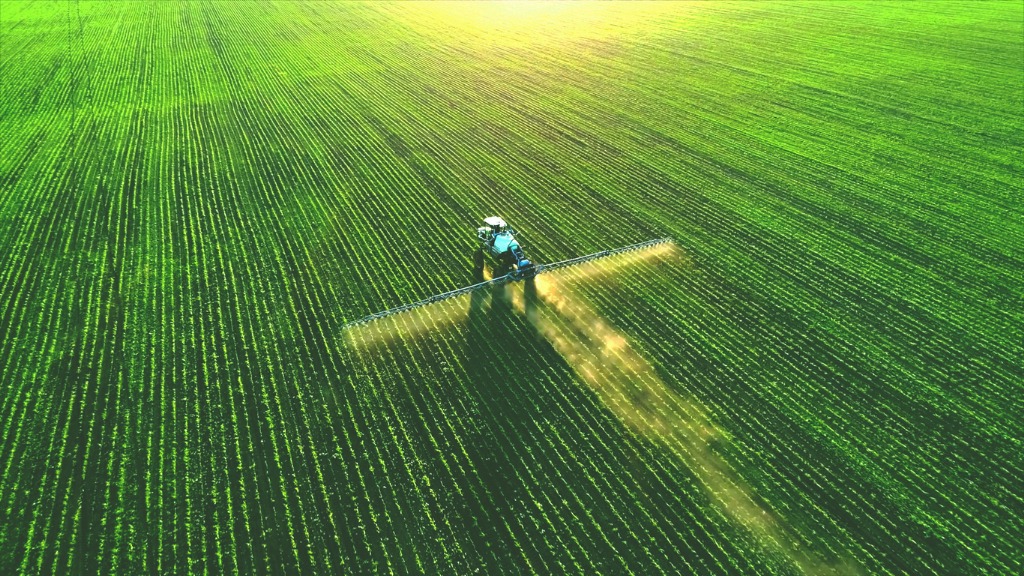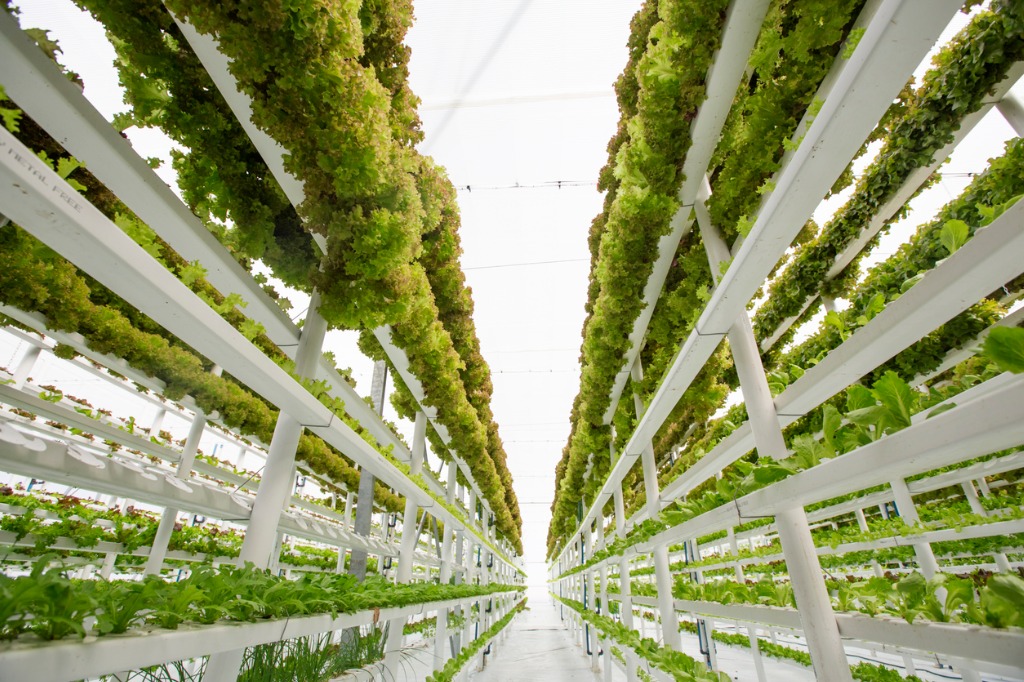Over the last 50 years, many changes have been introduced to the agriculture industry due to new and improved technologies created through research and development (R & R&D) processes.
These advances have forever changed the face of agriculture and made the farming sector far more efficient than it has ever been. These improvements have come just in the nick of time to meet increasing needs.
The farming and agricultural sector is facing enormous challenges from increasing world population, skyrocketing costs of supplies, shortages in the workforce, and the demands of the green revolution.
Acknowledging these challenges, both public and private sectors invested nearly $2 billion into agricultural innovation last year alone, and R&D spending over the previous five years has totaled almost $7 billion.
This discussion will focus on how agricultural R&D has led to some remarkable technology improvements and how it continues to advance the effort to keep agriculture abreast with the global need for its services and products.
Technological advances of the past
The following are essential agricultural innovations of the past 50 years, all of which have increased efficiency in the food and agricultural industries.
- rotary combine
- genetically-modified plants
- satellite technology
- mobile devices
- usage of Big Data
Rotary combine
This essential piece of farm equipment was introduced in 1975, and it has rapidly become a mainstay on most modern farms. Using this twin-rotor system combined, crops can be cut and separated in a single pass over any field.
Corn, for instance, can have the ears separated from the husks, the kernels can be separated from the ears, and the stalks can be chopped up, all in one highly productive pass. The rotary combine has significantly increased agricultural output and productivity over decades.
The rotary combine’s development improved previously existing combine harvesters by reducing the number of moving parts, which led to better reliability and easier maintenance.
Genetically-modified plants
While domesticated plants and animals have been selectively bred for thousands of years, the advancements in genetics led to recombinant DNA technology in the 1970s. This technology for creating genetically modified organisms (GMOs) has increasingly been used in agriculture.
Genetically modified plants such as modified tomatoes were developed that were highly resistant to insects, viruses, and even some herbicides used to protect crops. Other crops such as golden rice have been developed with increased nutritional value.
Satellite technology
With the increased usage of satellites starting in the 1990s, farmers could have a better overhead view of their acreage. This allowed for much better precision in water management, application of fertilizers, and enabling of autonomous tractors.
Mobile devices
Through recent decades, mobile devices have allowed farmers to access critical data needed to carry out their daily routines effectively.
It also allowed them to stay in constant contact with monitoring sensors and each other to collect and provide mutually beneficial information while on the job. Farmers gained the ability to adapt on the fly to changing weather conditions and sensor reports to sustain progress.
Usage of Big Data
Very recently, farmers have leveraged the ability to use Big Data to support their critical decision-making, enabling them to make better choices resulting in better outcomes.
Analytical programs developed to collect comprehensive data concerning weather monitoring, agronomic modeling, pricing modeling, and other valuable data can identify issues through predictive algorithms to alert farmers for their benefit.
Strategic use of this information helped farmers have better harvests and make decisions that benefited their operations and global agricultural productivity and growth.
Recommended Read Research and Development in Business: A Look at Funding Innovation
Technological advances of the present
Some of the ways that technology has had a significant impact on agriculture today include the following.
- vertical farming
- smart farming
- livestock technology
- modern greenhouses
- precision agriculture
- blockchain technology
Vertical farming
There are some considerable benefits associated with vertical farming, starting with the fact that vertical stacking of growing shelves takes up far less space during crop and food production.
As much as 70% less water is required to make vertical farming viable. It can control virtually all aspects of growth, including light, water, and humidity, so natural resources are used to the greatest advantage.
Smart farming
Otherwise known as automated farming, this approach automates many of the processes needed in the growing/packaging/transporting cycle so that the entire agricultural process is much more efficient and far less labor-intensive.
It uses seeding drones, automatic watering and harvesting, autonomous tractors, and other robotic replacements for traditional farmworkers.
Livestock technology
A great deal of attention has been focused recently on improving processes for the livestock industry after it was largely ignored for decades.
Agricultural research and development have addressed better nutrition and genetics and improved digital technology so that tracking and managing livestock can be a more data-driven process.
That, in turn, has led to significant improvements in raising and feeding poultry, dairy cattle, beef cattle, and other livestock.
Modern greenhouses
The significant shift in this area has been to convert a primarily experimental industry to one that directly competes with plant-based farm products’ large-scale cultivation.
Advances in greenhouse technology have made it possible to boost this rapidly growing industry to one valued at over $350 billion globally.
Precision agriculture
Virtually every commercial farm in this country has transformed, one that has abandoned traditional farming procedures in favor of modern-day digitally-managed precision processes.
Today, every variable involved in crop production is managed to precise levels, including moisture amounts, control of pests and vermin, soil composition, growth rates, and even climate controls.
This kind of precision has enabled farmers to manage their costs more effectively while also raising efficiency and productivity to astonishing levels.
Blockchain
Blockchain is a particular type of database that stores information into groups (referred to as blocks) chained together. As new information is entered into the database, new blocks are formed, creating a chronological chain of events.
The unique decentralized nature of Blockchain makes it so valuable for the agriculture industry. This permits products and practices to be verified, and it allows for the creation of markets for transparent premium products.
Because Blockchain can track ownership records and provide resistance to tampering, a number of agricultural issues can be solved all in one fell swoop.
Food fraud is no longer an issue. Safety recalls can be handled much better, inefficiencies in the food supply chain can be identified, and food traceability has become far more accessible.
While food traceability is extremely cumbersome using traditional communication methods, the shared data points in Blockchain architecture help to overcome this awkwardness and allow for far better visibility.
How you can save money on agricultural R&D expenses
There is always room for improvement, and the farming and agricultural sector is no exception. As the industry’s challenges continue to grow, the development of new and improved processes to meet those challenges needs to continue as well.
Research and development are not cheap. As we illustrated earlier, billions of dollars are spent each year on agricultural advances. However, companies can save a significant amount of money on R&D activities by taking advantage of the R&D tax credit.
Every business is different, but the team of specialty tax professionals here at Tri-Merit has identified the following activities that typically qualify agricultural businesses for the R&D tax credit.
- development of new or improved agricultural products or processes
- development of new or improved irrigation or hydroponic systems
- development of new or improved nutrition, yield, or disease resistance in crops or livestock through genetic hybridization or other genetic modification
- development of new or improved harvesting, production, or processing systems or techniques
- development of new or improved automated processes
We have also found that the IRS typically does not deem the following activities eligible for the R&D tax credit.
- making minor modifications to livestock diet or feed mixtures without a need for experimentation
- making mere adjustments to production capacity that do not create any uncertainty in how a project will unfold
- improving operations that relate to business considerations and have no technical component
If you believe that your company participates in activities that would qualify for the R&D tax credit, email us at info@tri-merit.com or give us a call at (800) 624-1076. We will ensure that your company receives the maximum possible tax saving on your R&D expenditures!
BE MORE CONFIDENT IN WHO YOU TRUST TO ADVISE YOUR CLIENTS.
We understand what it’s like for CPAs to feel cautious and uncertain about introducing clients to a new strategic partner. This is why Tri-Merit helps U.S.-based taxpayers generate cash through specialty tax incentives while reinforcing the CPA’s role as the clients’ most trusted advisor. Schedule a discovery call at 800.624.1076 to give your clients the best possible experience with a partner you can trust.
R&D tax credit | Cost segregation | 179D | 45L | Employee Retention Credit



